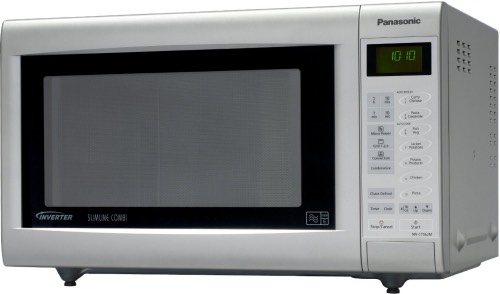I was lucky to be in Jackson Hole, Wyoming—virtually smack-dab on the "blue line" in the narrow path of totality—for the first coast-to-coast total solar eclipse in 99 years on August 21. There was so much hype leading up to this event, and it was completely justified! For an unforgettable moment in the midst of our vast universe, in a special spot dynamically shifting east along with the movement of our planetary objects, our sun and moon literally aligned and our little spot of Earth was transformed: the sky darkened, the horizon turned orange, stars appeared, and the air felt freezing. Whoops and hollers from the valley and mountaintops echoed through the air as neighbors shared in the wonder.
The weather cooperated with a bluebird day, and the air temperature peaked around 65º before the eclipse. As we neared totality one hour and eighteen minutes after the start of the partial eclipse, the air gradually felt colder and colder and intensified until—in the blink of an eye—totality! I was freezing and shivered in my hoodie, which I'd only grabbed on a whim before heading outside. People swore the temperature had dropped 20º, but it was only a measly 5º. Our sun, our wonderful warm and life-giving sun… millions of miles away but so massive and powerful that just by blocking its radiant heat energy, one’s thermal comfort can immediately be altered regardless of the air temperature.
As modern humans, we’ve been programmed to equate thermal comfort with air temperature
(think thermostat setpoint), which mainly correlates to convective heat transfer. But in reality there are three primary mechanisms for heat transfer: conduction, convection, and radiation. Most people understand the first two concepts well enough, but radiant heat transfer is less intuitive. Radiant energy is energy from electromagnetic waves, which have different wavelengths and properties, and it can travel directly from one body to another through space with no direct contact or transfer medium (such as air or water).
 This is how light and heat can make the 93 million mile journey from sun to the earth in only eight minutes, and how microwaves can reheat your leftovers without heating up the air. On the chart to the left, radiant heat energy is emitted mainly within the infrared and visible light wave spectrums (read this to nerd out on the topic).
This is how light and heat can make the 93 million mile journey from sun to the earth in only eight minutes, and how microwaves can reheat your leftovers without heating up the air. On the chart to the left, radiant heat energy is emitted mainly within the infrared and visible light wave spectrums (read this to nerd out on the topic).
The rate of radiant heat transfer (flux) is a function of a body's absolute temperature to the 4th power (i.e. big numbers get enormous in a hurry). The sun’s surface temperature is 5780 degrees Kelvin (K), versus Earth’s effective temperature of only 255 K—do the math and you’ll find the sun’s energy flux is a whopping 63,000 kW/m^2. Lucky for us on Earth, that flux gets whittled down as a function of the square of the distance between it and a colder body—otherwise we’d have vaporized long ago! The end result is a maximum flux of about 1kW/m^2 at the earth’s surface on a sunny day. That is still A LOT of energy, about equivalent to the energy it takes to run either a hairdryer, microwave or 13 (!) ENERGY STAR ceiling fans:


 x13
x13
The feeling of cold during the eclipse was a wake-up call for me. I perceived a massive air temperature drop, but the primary mechanism impacting my thermal comfort was the blocking of solar radiant heat gain. The fact that an object so far away can have this powerful impact is simply mind-boggling.
As humans, we need to both welcome and respect the sun.
Welcome it on a cold winter day when its radiant heat energy can keep you toasty warm on a sub-zero day, and respect it during warmer seasons when that energy can rapidly overheat a space and make you miserable. As I coined a number of years ago, “Have Your Sun and Shade It Too”. Yes, we can have it both ways! We’ve lost sight of this with the advent of modern mechanical systems, and it’s come at the price of thermal comfort. Some designers and mechanical engineers seem to have thrown common sense literally out the window (often at the behest of building owners who don’t know any better), incorporating massive areas of glass with no provisions for shading, then running heat load calculations and providing air conditioning (A/C) to meet the peak loads. The A/C system may be able to keep air temperatures at an appropriate level, but it does nothing to address discomfort from unmitigated solar radiation penetrating the spaces.
A more logical process for design optimization:
1. Design more moderate glazing areas in the first place (as informed by climate/project location and orientation; this goal need not come at the expense of daylight, views and aesthetic requirements)
2. Provide exterior shading (horizontal or vertical, fixed, operable, landscape-integrated: the options are limitless, and the most appropriate choices are project-specific)
3. Specify appropriate solar heat gain coefficients (SHGC) for glazing, which is also highly project-specific and may vary on different elevations (in Wyoming, if 1. and 2. have been thoughtfully tackled, you’re almost always best off with highest-SHGC glazing choices; in coastal California, a moderate SHGC product is often an appropriate balance for winter heat gain and summer heat reduction)
4. Provide interior window treatments (these can be surprisingly effective when the main “problem to be solved” is that of radiant heat gain rather than elevated air temperatures)
5. Provide ceiling fans (moving air can be amazingly effective in improving human comfort—we’ve just lost sight of this with the move towards A/C)
How do you turn these generic best-practice suggestions into actionable targets for amounts of glazing on different elevations, details for exterior shading, and optimized SHGC values? In my opinion, the most effective approach is to apply real-world experience and observations backed by targeted energy modeling exercises. Energy modeling can help strengthen recommendations and encourage decision-making to be based more on science and less on emotion. It’s also essential for proper mechanical system design. With so much future operational energy—and thermal comfort—wrapped up in these critical design decisions that are typically finalized early in the design process, there’s just no excuse to do it any other way!
And as we continue to help make better buildings, the countdown to the next total solar eclipse continues: only 6 1/2 years to go :)





























